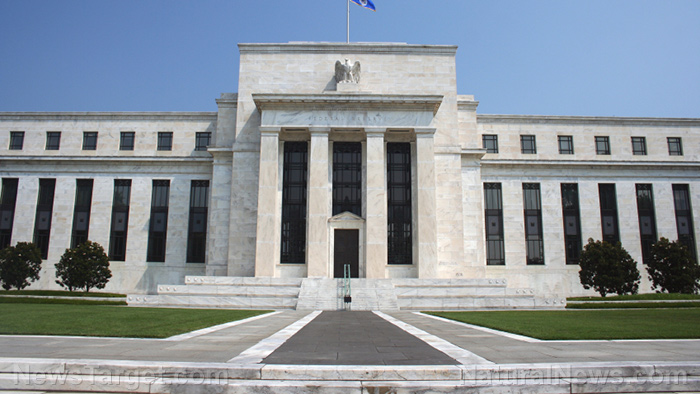Pension funds lose MILLIONS following SVB and Signature collapse
03/16/2023 / By Ramon Tomey

Several pension funds in the U.S. and other countries have lost millions of dollars due to their investments in Silicon Valley Bank (SVB) and Signature Bank, two financial firms that recently collapsed.
A March 14 report by Newsweek revealed that pension funds California Public Employees’ Retirement Fund (CalPERS) and California State Teachers’ Retirement System (CalSTRS) incurred losses following SVB’s collapse. CalPERS invested $67 million into SVB, while CalSTRS held $11 million in SVB stock with no bonds.
“Those will be assets at risk, likely at a loss – but in the grand scheme of things, a small percentage of our overall portfolio,” said a spokesperson for CalPERS. “We’ll continue to monitor the situation in the upcoming days and weeks and continue to be strategic, agile and patient as a long-term investor.
Pension funds for other states also incurred losses following the March 10 failure of SVB. The Colorado Public Employees Retirement Association had $12.5 million in SVB stock. The State Teachers Retirement System of Ohio had $27.2 million in SVB, while the Arizona State Retirement System invested $3.8 million in the now-collapsed bank.
South Korea’s National Pension Service also suffered a huge loss, given that it owns some 100,000 shares in SVB valued at around $23.2 million as of late 2022. Alecta, Sweden’s largest pension fund, was also affected as it had invested around $848.7 million in SVB. But the fund assured pensioners that “the impact of this investment on future occupational pension payments is very small.”
CalPERS also lost $11 million after the state of New York ordered the closure of Signature Bank. But that’s nowhere close to Alecta’s $282.9 million investment in Signature at the time of its collapse.
Collapse of US banks could lead to more banking failures across the globe
The California Department of Financial Protection and Innovation seized SVB on March 10 following a bank run that depleted the bank of its deposits. Two days later on March 12, the New York State Department of Financial Services ordered the closure of Signature Bank. Both subsequently went under the receivership of the Federal Deposit Insurance Corporation, which opened bridge banks for the two failed institutions.
The failures of SVB and Signature Bank were the second- and third-largest bank collapses in the United States – eclipsed only by the 2008 collapse of Washington Mutual.
But one former official of the Department of the Treasury blamed the policies of the Federal Reserve as to why SVB and Signature Bank collapsed. Paul Craig Roberts, former assistant treasury secretary for economic policy during the Reagan administration, warned that the Fed’s actions could lead to more banking failures inside and outside the United States. (Related: Fallout from SVB collapse spreads around the world as global economic system teeters.)
“For many years, the [Fed] kept the rates very low. So the interest on the financial assets that the banks have on their balance sheet is low. When the rates start rising, the values of their portfolios fall – but their liabilities don’t,” Roberts explained.
“The Fed’s policy of high interest rates pushes the banks into insolvency. And this is the cause of the problem.”
According to the chairman of the Institute for Political Economy (IPE), U.S. authorities dramatically revising banking regulations in 1999 caused the problem. Prior to that year, commercial banks could not engage in investment banking while investment banks took risk on their own money – due to the Glass-Steagall Act of 1933.
But the 1999 repeal of the law allowed commercial banks to engage in investment banking, essentially giving them a free pass to gamble with depositors’ savings. It has allowed tremendous risk taking previously not part of the system, Roberts said.
“I doubt if [President Joe] Biden or anyone in his administration, or even the [Fed], has any idea of the extent of risk,” remarked the IPE chairman. “If the Fed continues raising interest rates, there will be more failures.”
Visit Pensions.news for more stories about pension funds inside and outside the United States.
Watch this video about the collapse of SVB, the biggest since the 2008 financial crisis.
This video is from the dr Meno Peace Terrorist channel on Brighteon.com.
More related stories:
Stocks in multiple banks tank after collapse of SVB, leading to several halts in trading.
Silicon Valley Bank made risky covid pandemic Treasury bets, Bloomberg reports.
Silicon Valley Bank has now collapsed, and 95% of deposits were uninsured.
Sources include:
Submit a correction >>
Tagged Under:
Alecta, Bubble, calpers, CalSTRS, Collapse, Federal Reserve, Glass-Steagall Act, interest rates, losses, market crash, National Pension Service, Paul Craig Roberts, pension funds, pensions, rate hikes, retirement funds, risk, Signature Bank, Silicon Valley Bank
This article may contain statements that reflect the opinion of the author
RECENT NEWS & ARTICLES
COPYRIGHT © 2017 BUBBLE NEWS


















